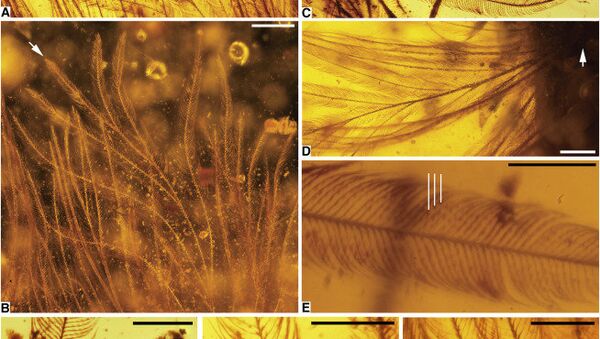A cross-section of the central shaft of the tail feathers is shaped like the letter C, while all existing birds possess feathers with hollow tubes at the center in the shape of the letter O. The C-shaped streamers were not as good for flying as O-shaped ones.
Some of the feathers had dark brown strips and colorless strips appear alternately.
Since no scratches were found on the feathers and none of the bird's body parts were discovered near the feathers, scientists believe the light and colorful feathers easily fell when the bird faced predators, Xing told the Global Times on Sunday.
Today's male birds use beautiful tail feathers to attract females in courtship.
Most of the previously discovered tail streamers were flattened by stones, making the feathers nearly impossible to study. "This discovery pointed out a new direction for us to explore evolution of ancient birds. Scientists used to take the modern O-shape streamers for granted when examining flattened feathers," Xing said.
The 31 examined ambers contain feathers as long as 5 centimeters, suggesting the birds would be at least 10 centimeters long.
This article was originally published in Global Times.




